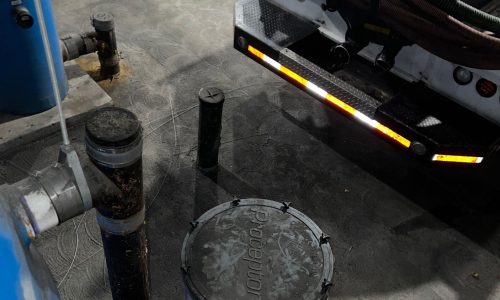Got a Plumbing Emergency? Call us now: (888) 789.1090
Want an approximate price? Get a free quote.

Grease traps are a crucial component of a commercial kitchen that helps maintain proper wastewater management in food establishments. The main principle of the device is to prevent fats, oils, and grease (FOG) from entering the sewage system, reducing the risk of blockages and environmental contamination. However, like any other human-made technologies, grease traps require regular maintenance, and regular cleaning is essential to ensure the effective functioning of grease traps. However, determining how often a grease trap should be cleaned can be challenging, depending on various factors. This article will explore the key considerations and guidelines for determining how often a grease trap should be cleaned to maintain a clean and efficient system. Let us evaluate few of the factors that determine how often should a grease trap be cleaned.
Usage Intensity: The usage level is the primary factor influencing how often a grease trap should be cleaned. High-volume establishments, such as busy restaurants and hotels, generate more significant amounts of FOG, necessitating more frequent cleaning. In contrast, smaller businesses with lower food production may only need cleaning sometimes.
Trap Size: The size of the grease trap is another critical factor. Larger traps can hold more FOG before reaching capacity and may require less frequent cleaning than smaller traps with limited holding capacity.
Local Regulations: Many municipalities and health departments have specific regulations regarding grease trap cleaning frequency. Businesses must adhere to these guidelines to maintain compliance and avoid fines.
Food Preparation Practices: The type of food prepared also impacts grease accumulation. Grease traps in establishments that mainly cook greasy foods will fill up faster and necessitate more frequent cleaning.
Maintenance Practices: Regular maintenance of grease traps, such as skimming off floating grease and cleaning inlet baffles, can prolong the time between professional cleanings.
While there is no one-size-fits-all answer to the ideal frequency of grease trap cleaning, some general guidelines can be followed:
Monthly Cleaning: Monthly cleaning is recommended for high-volume commercial kitchens serving deep-fried or greasy foods. This frequency ensures that the trap effectively captures FOG and prevents blockages.
Quarterly Cleaning: Establishments with moderate FOGS production, such as smaller restaurants or cafes, can often schedule grease trap cleaning every three months. Regular maintenance practices can complement this interval.
Semi-Annual Cleaning: Some low-volume businesses, such as office buildings with small kitchenettes, may find that cleaning the grease trap twice a year is sufficient to maintain proper functioning.
Regular Inspection: Regardless of the cleaning frequency, regular inspections are essential to monitor the grease trap's performance. These inspections can help detect any issues early on and prevent potential problems.
Determining how often a grease trap should be cleaned depends on several factors, including usage intensity, trap size, local regulations, food preparation practices, and maintenance efforts. Regular cleaning is vital for efficient wastewater management and preventing blockages that can disrupt business operations. Business owners and managers must carefully assess their establishment's needs and consult local regulations to establish an appropriate cleaning schedule. Commercial kitchens can contribute to a cleaner environment and trouble-free wastewater disposal by prioritizing the proper care and maintenance of grease traps.
Prevents Blockages: Regular cleaning prevents the accumulation of FOG and solid particles, reducing the risk of blockages in both the grease trap and the sewage system.
Ensures Compliance: Adhering to local regulations regarding grease trap cleaning frequency ensures that businesses remain compliant with environmental and health standards.
Prolongs Grease Trap Lifespan: Routine cleaning and maintenance extend the lifespan of the grease trap, reducing the need for costly repairs or replacements.
Protects the Environment: Properly cleaned grease traps prevent FOG from entering natural water bodies, safeguarding the environment from pollution.
We're available 24/7